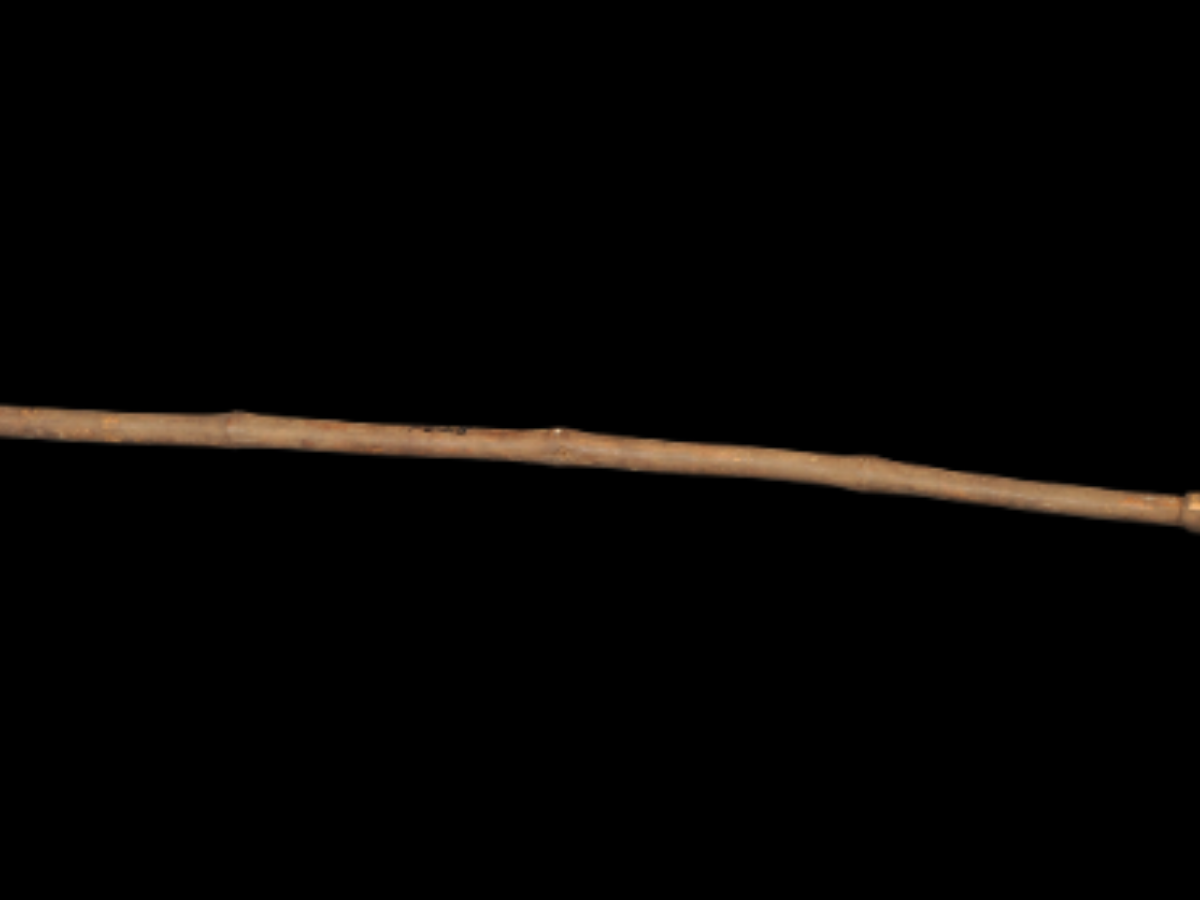State
Tribe Name
Art Type
short description
Gadabas, settled in the Koraput and Malkangiri districts of Odisha, regard themselves as one of the indigenous communities who depend on agriculture for their main livelihood. The digging stick is one of the very important implements for the Gadaba people. They use it extensively in everyday life for agricultural as well as foraging purposes.
Thumbnail

Filter Postion
Left
Filter Background
Off
Theme
Filter Header Image

content
Image

description
Gadabas, settled in the Koraput and Malkangiri districts of Odisha, regard themselves as one of the indigenous communities who depend on agriculture for their main livelihood. The digging stick is one of the very important implements for the Gadaba people. They use it extensively in everyday life for agricultural as well as foraging purposes.
A long stick is made out of a strong branch-cut with endurance and toughness in mind; one end is sharpened to penetrate the ground easily. The other end may either be burnt to harden the hardness along with the cutting power or reinforced simply by an iron blade. The digging stick is used chiefly for uprooting edible tubers, digging planting holes, loosening earth crust, collecting medicinal plants, and at times still showing its worth in shifting agriculture-an age-old practice of the Gadaba to cultivate crops while maintaining soil nutrients.
Some uses place this tool in the hands of women, who use it to harvest among the wild root vegetable tubers and herbs, thus showcasing an example of the rich knowledge that the tribals possess concerning flora in the region. In this respect, the digging stick disturbs the soil structure only minimally, thereby conserving soil fertility and preventing degradation due to erosion. The persistence of the digging stick with the Gadabas indicates their appropriation of ecological sustainability.
However, it is the digging stick that is fast disappearing from use, unlike many other indigenous tillage tools obsolete due to modernization and mechanization. Indigenous tools speak of endurance and self-reliance; thus, efforts must be put into documenting and conserving their use, so that they can be rightfully claimed as their cultural heritage by future generations and continue appropriate practice of sustainable agriculture
A long stick is made out of a strong branch-cut with endurance and toughness in mind; one end is sharpened to penetrate the ground easily. The other end may either be burnt to harden the hardness along with the cutting power or reinforced simply by an iron blade. The digging stick is used chiefly for uprooting edible tubers, digging planting holes, loosening earth crust, collecting medicinal plants, and at times still showing its worth in shifting agriculture-an age-old practice of the Gadaba to cultivate crops while maintaining soil nutrients.
Some uses place this tool in the hands of women, who use it to harvest among the wild root vegetable tubers and herbs, thus showcasing an example of the rich knowledge that the tribals possess concerning flora in the region. In this respect, the digging stick disturbs the soil structure only minimally, thereby conserving soil fertility and preventing degradation due to erosion. The persistence of the digging stick with the Gadabas indicates their appropriation of ecological sustainability.
However, it is the digging stick that is fast disappearing from use, unlike many other indigenous tillage tools obsolete due to modernization and mechanization. Indigenous tools speak of endurance and self-reliance; thus, efforts must be put into documenting and conserving their use, so that they can be rightfully claimed as their cultural heritage by future generations and continue appropriate practice of sustainable agriculture
Image Mode
landscape
promoted
On
Verified
Off
